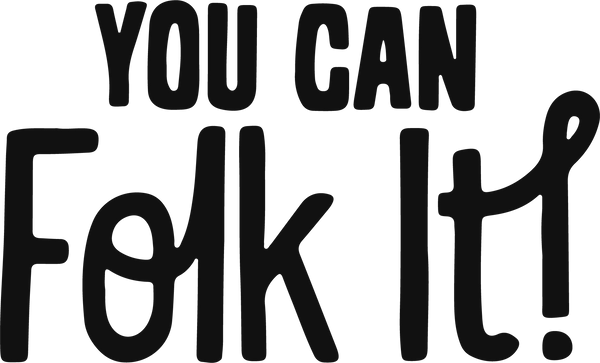Introducing Our Favourite Brushes For Beginners
Why would a beginners kit need four brushes? Well, our brand new Masterclass aims to give you a solid foundation of skills and techniques used in Folk Art painting. Here are our reasons behind why we included them and what you can learn when using each one.
When you begin painting, the brushes and supplies available to you can be overwhelming to say the least. Different sizes, varying bristles, long handles, short handles... it can put you off before you even begin.

That’s why, in our new Masterclass, we have taken the stress out of those decisions and put together a selection of brushes perfect for the beginner, to give you a solid foundation in the most common brushstrokes and techniques from Folk Art and Decorative painting. In this blog, we thought we would introduce you to each brush and discuss why we added it to our new beginners kit.

No 3. Round Brush.
We could not create a Folk Art painting kit without including one of these brushes. Used in Canal Art, Tole Painting, Bauernmalerai, Hindeloopen.... it is one of the brushes we could not be without! With close set bristles that create a perfectly pointed tip, this brush takes the work out of creating lovely smooth comma strokes.
The key to using this brush to create flowers, ribbons, dragonflies (the list goes on) is pressure. As you learn Folk Art and work your way through each lesson, you are learning to guide the brush over the paper. You are training your muscles to hold the brush and directing the bristles where to go and how to act. Once you have learnt this skill, it will be a skill you keep forever.

No. 8 Flat Brush.
Newer to the Decorative painting scene than the Round Brush, this beautiful brush with its sharp chiselled edge can be used in much the same way as the round brush to create your strokes and develop your Folk Art painting skills. By applying and lifting pressure, you can help the brush create 'c' strokes, 's' strokes and pivot strokes which can be transformed into leaves, butterflies, roses and so much more.

Liner Brush.
Thinner than the Round Brush, the Liner Brush can seem like a rather daunting brush to begin with. However, if the Round Brush is the leading lady, think of the Liner Brush as the best supporting actor - the designs you can create will only be enhanced by the details you can add with this brush. Just like the thicker round brush, you can recreate the comma stroke with the Liner Brush for a more delicate look.
That’s not all though... it also opens up your world to create more delicate work to paint details like lace, lettering and delicate stems. For skills like cross hatching, you don’t need to apply as much pressure, instead you need to get comfortable with lightly brushing the tips of the bristles against the paper. It is true that this brush requires a little care and attention when you are learning but your patience will be rewarded.

Deerfoot Brush.
Aptly named because of its shape, you will be forgiven for wondering what on earth this brush is doing in a beginners painting kit when it looks so different to the others. This brush has won a place in our hearts because of all that it can do that no other brush can. The Deerfoot Brush can create lots of texture quickly and gives you the ability to slowly build colour as well as create highlight and shade in your painting. Our Masterclass teaches you to use the ‘stippling’ technique to create wreaths, topiary, teddy bears and grass. If you can use a dotting tool, you can use this brush - we just love how mindful this technique is
So there is the low down on all four of the brushes included in the Masterclass for beginner painters - Have you tried it yet? Which brush is your favourite?
Leave us a comment below we would love to hear from you.
